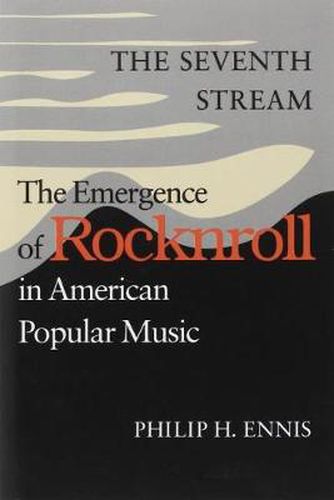Readings Newsletter
Become a Readings Member to make your shopping experience even easier.
Sign in or sign up for free!
You’re not far away from qualifying for FREE standard shipping within Australia
You’ve qualified for FREE standard shipping within Australia
The cart is loading…






Philip Ennis presents a major social and cultural study of the origins and evolution of rocknroll. With masterful command of general trends and telling details, he describes the artistic, economic, and political context that nurtured this radically new popular music. This seventh stream, which drew from existing forms of pop music, began as a youth movement of rebellion and remains a worldwide banner of youth in search of alternatives.
Rocknroll emerged, he shows persuasively, from the successive meeting and melding of the other six streams -pop, black pop, country pop, jazz, folk, and gospel. He chronicles how these were shaped by struggles over musical property rights, and by the new technologies of radio and phonograph record.
The most decisive clash was between the New York based music publishers and the radio broadcasters. Their decades long contest resulted in many cultural changes. The basic unit shifted from sheet music to the phonograph record. The radio disc jockey in small, independent radio stations became the new focal point for all the popular musics. New venues, audiences, and talent appeared throughout the nation.
The appearance of rocknroll marked a significant cultural moment, argues Ennis. This seventh stream was part of an explosive efflorescence in all the American arts after World War II. Its early stars-Little Richard, Chuck Berry, Jerry Lee Lewis, and Elvis Presley-built a pantheon of performers with deep roots in all the other streams.
$9.00 standard shipping within Australia
FREE standard shipping within Australia for orders over $100.00
Express & International shipping calculated at checkout
Philip Ennis presents a major social and cultural study of the origins and evolution of rocknroll. With masterful command of general trends and telling details, he describes the artistic, economic, and political context that nurtured this radically new popular music. This seventh stream, which drew from existing forms of pop music, began as a youth movement of rebellion and remains a worldwide banner of youth in search of alternatives.
Rocknroll emerged, he shows persuasively, from the successive meeting and melding of the other six streams -pop, black pop, country pop, jazz, folk, and gospel. He chronicles how these were shaped by struggles over musical property rights, and by the new technologies of radio and phonograph record.
The most decisive clash was between the New York based music publishers and the radio broadcasters. Their decades long contest resulted in many cultural changes. The basic unit shifted from sheet music to the phonograph record. The radio disc jockey in small, independent radio stations became the new focal point for all the popular musics. New venues, audiences, and talent appeared throughout the nation.
The appearance of rocknroll marked a significant cultural moment, argues Ennis. This seventh stream was part of an explosive efflorescence in all the American arts after World War II. Its early stars-Little Richard, Chuck Berry, Jerry Lee Lewis, and Elvis Presley-built a pantheon of performers with deep roots in all the other streams.